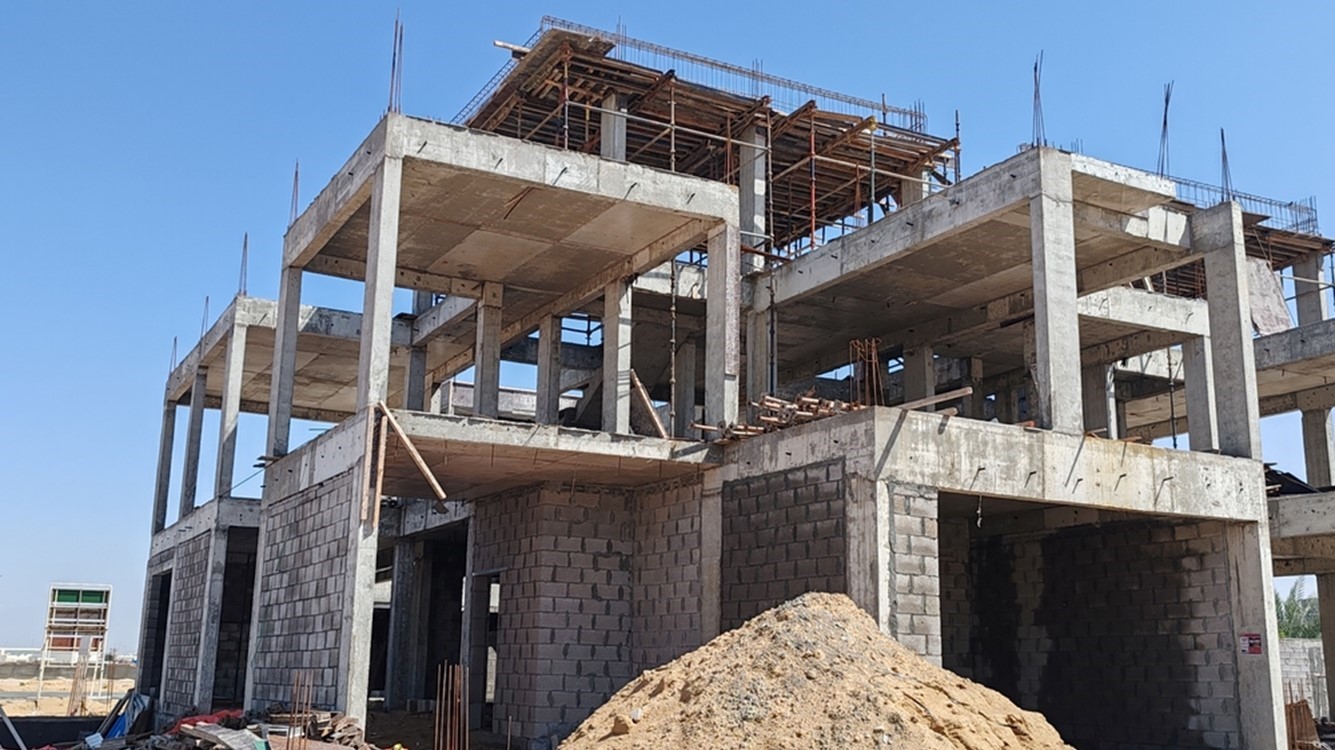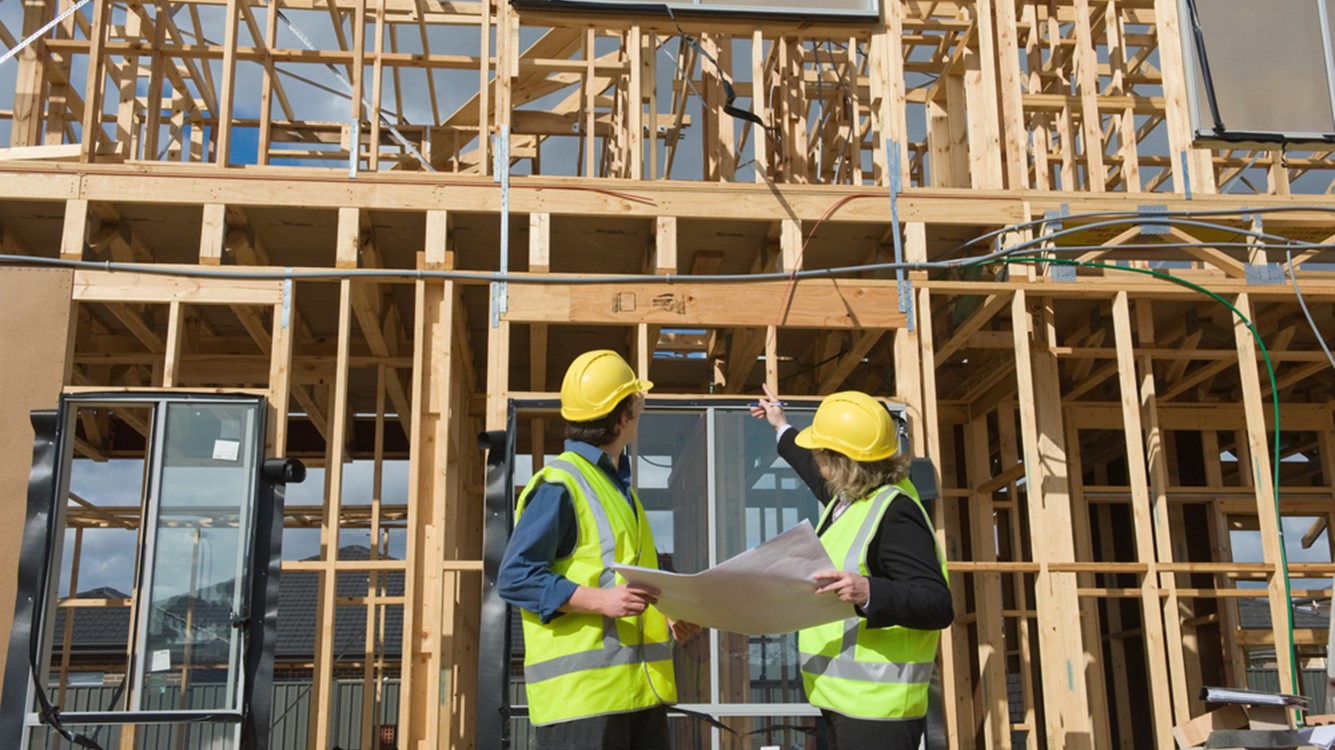July construction peters out
Construction is softening in the face of labor and financing challenges.

September 3, 2024
Construction spending slumped 0.3% in July, the first monthly drop since October 2022, after June spending was revised higher. Compared to a year ago, spending was 6.7% higher. Private spending led the overall monthly drop while public spending rose. Since spending is captured in nominal dollars, inflation plays a role. According to the producer price index, costs for construction inputs rose 1.2% compared to a year ago in July; wages for nonsupervisory construction workers were 4.4% higher than a year ago (compared to 3.8% for all industries).
Private residential construction spending dropped 0.4% in July on a 1.9% slump in single-family construction. Still-high mortgage rates are impacting demand, even though rates have dropped from their recent peaks. Any improvements in the mortgage rate have mostly benefitted those looking to refinance, but not to purchase their first home. Sidelined buyers are waiting for even lower rates, especially as the Federal Reserve is expected to begin a rate-cutting regime in mid-September. Builders are focusing on completing existing housing projects rather than starting new ones.
Multifamily construction spending was flat in July but 6.7% lower than a year ago. Builders have pivoted away from new multifamily construction as a record number of apartments is finishing up. Financing for new multifamily projects has been a challenge, as lending conditions for these projects have been tight for nine consecutive quarters, according to the Federal Reserve. Rents have been falling in markets where more new apartments are available, but with a dwindling pipeline, the reprieve in rents will be short-lived.
Private nonresidential construction spending fell 0.4% in July as all categories except office, manufacturing and transportation infrastructure spending fell. Data centers are now broken out under office construction and were 0.4% higher. Spending on data center construction is now 59% higher than a year ago and is nearly double the pace of late 2022, when generative artificial intelligence (GenAI) platforms were first announced.
Manufacturing infrastructure spending was flat on the month for the first time since September 2023. The largest components in manufacturing: construction, computer, electronic and electrical manufacturing (chips plants) fell 0.6%. Spending in this category remains 29% higher than a year ago and nearly three times higher than in August 2022, when federal funding was announced. However, challenges are mounting, as projects are experiencing delays. Reasons cited for the delays include policy uncertainty in an election year and deteriorating market conditions. These projects include solar and battery plants, as well as chip plants; South Carolina and Tennessee are the two states with the most delays.
The good news is that utility-scale electric generating capacity is growing, which is much needed for the increased use of GenAI and manufacturing. New generating capacity for the first half of 2024 was 21% higher than capacity added in the first half of 2023, according to the US Energy Information Administration. The largest share of new capacity was from solar power, most of which came from Texas and Florida. Battery storage and wind power added to the mix. More capacity and resilience are needed in the nation’s electric grid to meet the heightened demand for electricity in the face of extreme heat, severe weather events and increased computing demands for GenAI.
Public construction spending, which is mostly done at the state and local government levels, eked out a 0.1% gain in the month but was 8.1% higher than a year ago. All categories except educational structures, public safety and highway and street infrastructure were higher. Most states have their fiscal years start on the first of July.
There is a speed limit on how much construction can pick up in the face of demographic changes, manufacturing reshoring and the increased need for electrical capacity.
Yelena Maleyev, KPMG Senior Economist
Bottom Line
Construction is softening in the face of labor and financing challenges. According to the Associated General Contractors of America, 94% of construction firms find difficulties in filling open positions, with lack of education and training of the current workforce being the number one hurdle. Lending conditions have remained tight for construction and development loans for ten consecutive quarters. While interest rate declines are expected to help ease conditions starting in September, cuts are forecast to be gradual. Delays to large infrastructure projects are increasing, while labor shortages are not expected to be resolved swiftly. There is a speed limit on how much construction can pick up in the face of demographic changes, manufacturing reshoring and the increased need for electrical capacity.
Explore more

KPMG Economics
A source for unbiased economic intelligence to help improve strategic decision-making.

Housing starts plunge
Home buyers are holding out for lower rates.
Subscribe to insights from KPMG Economics
KPMG Economics distributes a wide selection of insight and analysis to help businesses make informed decisions.
Meet our team
